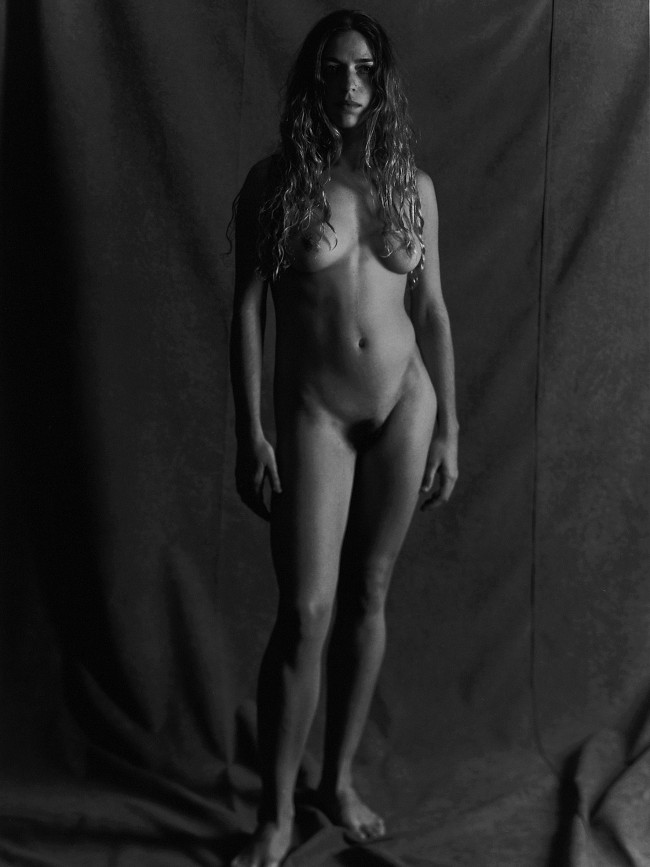Sevilla (Detail), 2007
Schwarz-weiss Fotografie auf Barytpapier
Black and white photography on baryt paper
210 x 140 cm
© Balthasar Burkhard
Balthasar Burkhard
Songlines
11.11.2007 – 16.03.2008
Burkhard has had the intention for some time now of working with the female nude. The idea for Songlines emerged in collaboration with his friend of long-years’ standing Jean-Christophe Ammann.
The exhibition will show the most recent of Balthasar Burkhard’s photographs which were taken in Seville in the spring of 2007.
The nudes of the artistes and artists have a timeless quality in an undefined space as if they were visions or remembered images of mystical beauties. Their appearance is also a herald of their vanishing.
The nude photographs are reminiscent of the old masters and the long-past traditional studio situation. The nameless women stand on lengths of cloth with the draped folds around their naked feet exhibiting a telluric structure. It seems as though the backdrop and the ground are transformed into a landscape marred by erosion.
The title Songlines denotes the invisible lines that crisscross the entire continent of Australia and hark back to the old mythology of the aboriginal people. When in touch with a songline, an Aborigine begins to sing.
In the German translation, where “songlines is translated as “dream paths, the connection is made with the mythology of the Dream Time and the wandering of the nomadic tribes.
The British author Bruce Chatwin was also interested in this topic and in 1987 wrote a book of the same name in which he shows how the Lines represent songs that the Aborigines follow with singing.
In addition to the photographs of nudes, Balthasar Burkhard presents subjects elemental to nature. On the one hand, water is depicted as origin and source in the form of a waterfall flowing from stone (La Source, 1988). It appears as a rent in the skin of the Earth – and at the same time, as a trace left by history.
On the other hand, he illustrates elemental force by capturing photographically the power of a wave (Normandie, 1995). He catches the precise moment when the wave’s force is at its height before it falls back in rhythm with its ceaseless movement. The wave is only one example of the endless and recurrent cycle of nature.
Elemental, as in “Origin of the World, is also the photograph L’Origine from 1988. In a close view, Balthasar Burkhard shifts the focus of the picture to the female sexual organs. The naked body is absorbed into the dark background and the opened thighs in the forefront of the picture channel the attention of the viewer.
The snail series Escargot (1992/93) challenges viewers to give their associations free reign. The small creatures open themselves up to the viewer in large-format propinquity. In this method of approach, the orifices and convolutions of their bodies become untouchable and yet vulnerable entities.
In all his motifs, Balthasar Burkhard retains the necessary detachment. A detachment that does not overstep the “line.
In addition to this he takes photographs from a very individual perspective: A perspective that uses light to reveal the subject while at the same time retaining the purity of gaze without dissembling.
The photographs are complemented by a space-filling large projection: The film Ciudad from 1999, a documentary work of art and also a modern symphony of the metropolis Mexico City. Black-and-white sequences alternate with those in colour, and aerial pictures with intimate insights into the life of the city. Upheaval and an uncontrolled growth become visible. People, machines, automobiles – everything rotates in a dispassionate world between heaven and earth.

